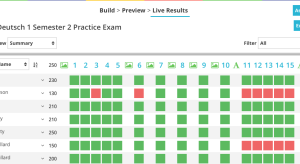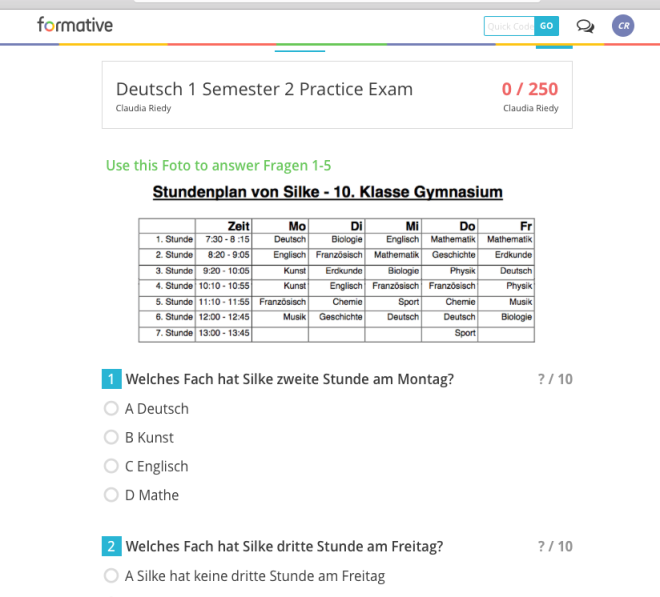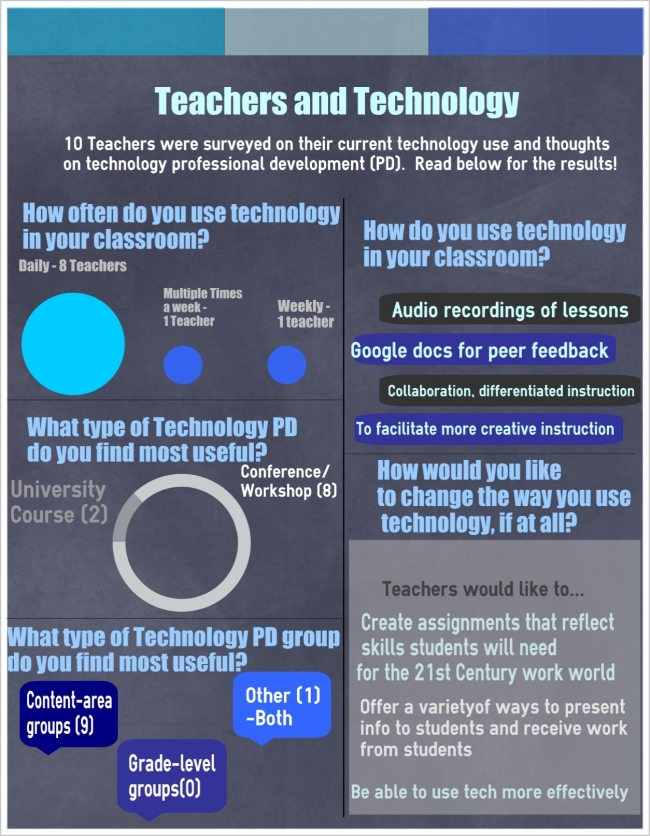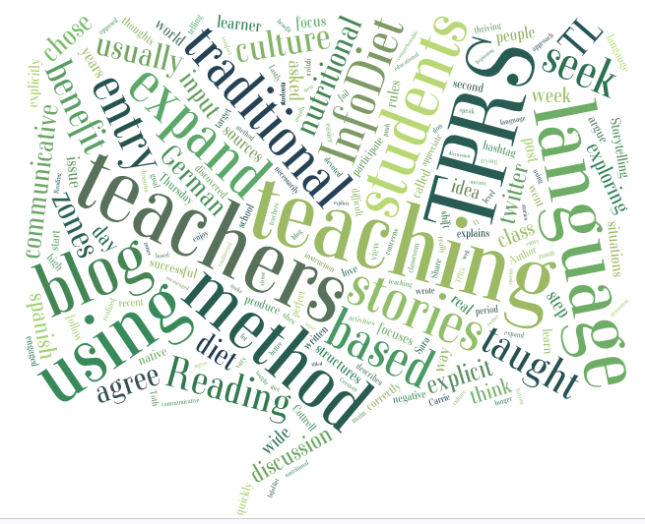This semester my MAET course is focused on how students learn in school and in other settings. This week’s assignment was to create a lesson plan integrating a learning theory as well as a demonstration of pedagogical knowledge.
This lesson plan is designed for German 2 classes and focuses on the grammar point reflexive verbs. The big ideas include vocabulary (reflexive verbs), reflexive pronouns, sentence structure, and differentiating between using reflexive verbs and non-reflexive verbs.
Reflexive verbs are taught in this unit in the context of routines/getting ready for an event. Examples of reflexive verbs taught include brushing teeth, washing face, shaving, getting dressed, and looking in the mirror.
Essential Questions:
-What do the reflexive verbs mean?
-How are reflexive verbs used in sentences in German?
Standards reached in lesson:
World Language Standards:
1.3 Presentational Communication – Students present information, concepts, and ideas to an audience of listeners or readers on a variety of topics.
4.1 Students demonstrate understanding of the nature of language through comparisons of the language studied and their own
Common Core:
Language 1 – Students can demonstrate an understanding of grammar when writing and speaking
Language 4 – Students can clarify meaning of unknown words or phrases with context clues and word parts.
The lesson plan is as follows:
Warm up/activation of prior knowledge: Students will spend 5 minutes reviewing meanings of reflexive verbs on our class quizlet page. They will use student-created picture flashcards.
Next, we will review as a class how reflexive sentences are constructed. I will lead the class in creating a few example sentences, then I will give students sentences to translate into German.
After reviewing the grammar/sentence structure, the class will do a TPR-based activity (Total Physical Response). I will say reflexive sentences in German and the students will act them out. First, I will act the sentences out with students. Then, students will act out sentences without me. Finally, students will close their eyes and act out the sentences without being able to use cues from other students. This activity acts as a formative assessment. If there are many verbs/sentences that students are acting out incorrectly, I will go over them again.
Finally, students will complete a summative assessment for this topic. Students will be given a sentence using reflexive verbs. The student is challenged to teach how to structure this sentence to a learner. They can choose how they teach this sentence (showme, iMovie, screencast,…etc) but they must use their iPad. Students will work on this lesson during remaining class time and will finish for homework.
This assessment will show me that students can answer the essential questions for this lesson. This will show me they understand the information. If they create an accurate, detailed lesson, they will be able to identify the meaning of the reflexive verbs in their example. They will also be able to demonstrate how reflexive verbs are used in a sentence. This assessment also gives students the opportunity to edit, re-do and move at their own pace if they need more time and practice.
The most challenging part of this topic is that it is so different from English. In English, one would say “I wash my hair’ but in German, it is more like ‘I wash myself my hair’. Students often want to translate directly, which does not work and it can be very difficult for them to accept that what sounds so wrong in their native language can be 100% correct in their second language.
In this lesson, I wanted to incorporate many strategies and activate many learning styles. The picture flashcards will appeal to visual learners. The TPR activity will appeal to kinesthetic/hands on learners. The class review will appeal to both visual and auditory learners. The final assessment will allow students to demonstrate their learning according to their learning style and how they learn best.
I chose these techniques to appeal to as many of my students as possible. I also like to give choices to my students whenever possible. I have found that when they have control over their learning, they try harder, create a more quality product, and more students achieve mastery. I also wanted to incorporate repetition. The best way for students to learn a new grammar point, especially one that is so different than their native language is to practice over and over. In the past I have done lots of worksheets and drills and students have not been engaged. The activities implemented in this lesson offer repetition in new, more engaging ways.
The TPR activity is influenced by the cognitive approach, more specifically the theory of embodied cognition. The activity in my lesson is based on the idea from Cognitive Perspectives on Learning (2007); “we learn with our whole bodies” (p. 1). By attaching a word whose meaning is an action with the actual action, the students will later reperceive this activity and have a better chance of remembering the meaning of the word. In a study by Kuo, et. al (2014), students who participated in an Embodiment -Based TPR activity (similar to the one in my lesson plan) had a higher retainment of new vocabulary than students who used other vocabulary learning methods. Kuo explained that this is due to a connection between language and motor processes in the brain. Students make a gesture that represents the meaning of the vocabulary word while practicing that vocabulary word. Those students later reperceive that action when attempting to recall the meaning of the word. The reperception aids the student in remembering the word meaning.
Students will use a variety of apps on the iPad to complete their assessment. My school has 1:1 iPads, so this is why they will use this device. I gave them the choice of apps so they can have control over how they express their learning. This lesson could be done without the iPad, but students would not have as many creative options. Students would still be able to teach this concept to other students, but their products would likely represent more traditional methods. Students would also likely create very similar products. This is not necessarily a bad thing, but I like that the variety of apps available to them increase their options and also increase their creativity.
I look forward to implementing this lesson in the coming weeks, and I will write an updated post with the outcome.
References:
Cognitive Perspectives on Learning. (2007). 1-5.
Kuo, F. , Hsu, C., Fang, W., Chen, N. (2014). The effects of Embodiment-based TPR approach on student English vocabulary learning achievement, retention and acceptance. Journal of King Saud University – Computer and Information Sciences 26, 63–70.70.



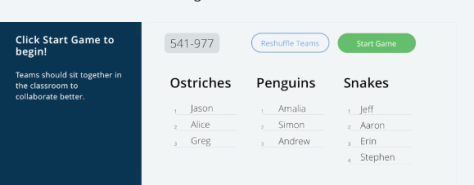
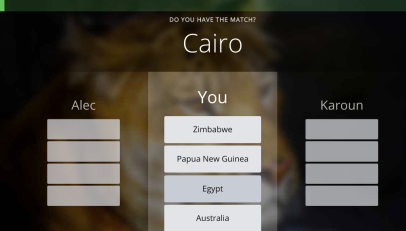

 I have never found an assessment tool/technology that is so customizable. I love that I can change the scoring settings to let students immediately get feedback, and then allow them to edit their responses when I want to focus on mastery.
I have never found an assessment tool/technology that is so customizable. I love that I can change the scoring settings to let students immediately get feedback, and then allow them to edit their responses when I want to focus on mastery.